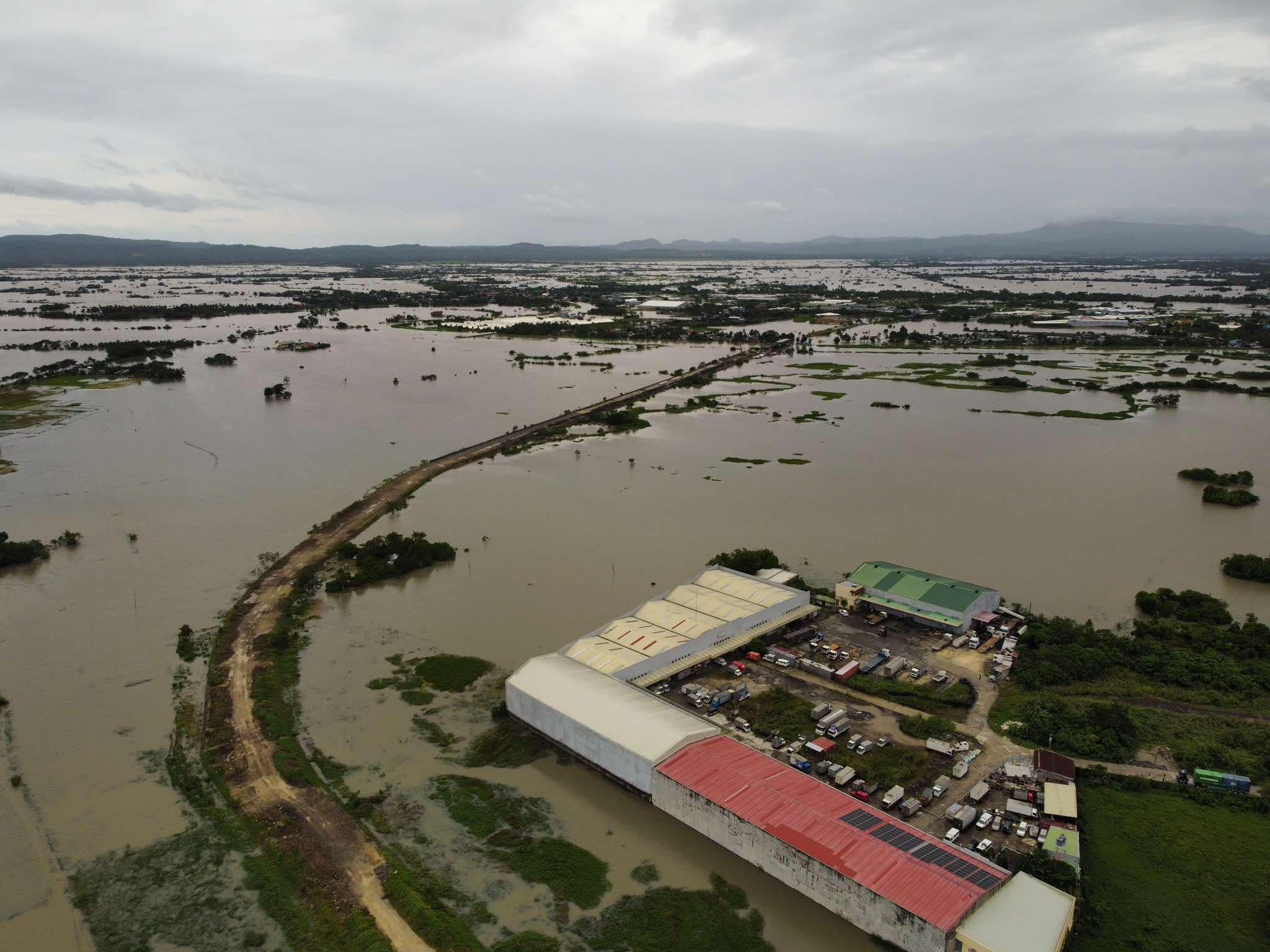What we’re watching: Weekly disaster update, October 28

We know all too well that disaster can strike anytime, anywhere in the world. Some disasters make headlines; others do not. Here at the Center for Disaster Philanthropy (CDP), we monitor the status of disasters worldwide and compile a list of the ones we’re tracking weekly, along with relevant disaster-related media coverage.
Here’s what we’re watching for the week of Oct. 28, 2024.
New or Emerging Disasters
Tropical Storm Trami – Philippines: A powerful storm made landfall in Isabela Province, located in the Northeast region of the Philippines. As of Oct. 25, 82 people have died, a number that is expected to rise. More than 150,000 people evacuated, and at least 75,000 are now displaced, with landslides and flooding causing severe damage to villages. Flooding caused thousands of people to require rescue as authorities scrambled to find needed vessels.
Tropical Storm Oscar – Cuba: After an unrelated power outage threw the entire country into darkness last week, Cuba faced Category 1 Hurricane Oscar on Oct. 21. The storm killed six people and dropped 15 inches of rain, with landslides and flooding forecasted.
Floods – Multiple Countries: Flooding affected many countries this week. Below are some of the most severe floods we’re tracking:
- Roswell, New Mexico, U.S.: On Oct. 20, 2024, heavy rainfall flooded Roswell, New Mexico, an area still burdened with the recovery of the past summer’s devastation. Two people died in the floods, and at least 309 were water rescued, many hospitalized with injuries.
- Kotzebue, Alaska, U.S.: On Oct. 23, 2024, a strong fall storm flooded streets and damaged buildings in Kotzebue, Alaska, a town on Alaska’s west coast. Water rose two to four feet above the normal tide line, and wind gusts reached 55 mph. The surge of water and high winds caused sudden, catastrophic flooding, and the city declared an emergency. Eighty people were evacuated, boats were lost at sea and flights were canceled for two days.
- Central France: On Oct. 17, the worst flooding in 40 years hit central France. At least 1,000 people were evacuated, and about 2,300 required rescue operations. Approximately 27.5 inches of rain fell in 48 hours in the regions of Ardeche and Lozere. Many railway tracks were impassable, local train services were disrupted for days, and the main highway was completely inundated.
- Nigeria: As of Oct. 14, floods in Nigeria have killed over 300 people, affecting 1.2 million across the country and displacing tens of thousands just in Kogi state alone. Cholera is rising amid the flooding, which comes during a food security crisis. Over 150,000 acres of farmland have been inundated. To learn more about the devastating floods in Nigeria, read our West and Central Africa Floods disaster profile.
- South Sudan: At least 327,000 people have been displaced in South Sudan’s worst flooding in decades. Communities have been devastated, and many roads and infrastructure have been damaged, exacerbating an already dire humanitarian crisis in the region. Additionally, 120,000 cases of malaria have been reported and at least two reports of cholera, both of which are on the rise. To read more about the humanitarian crisis in South Sudan, check out our South Sudan Humanitarian Crisis disaster profile.
Previous/Ongoing Disasters
Complex Humanitarian Emergency – Lebanon: The humanitarian crisis across Gaza, Israel and Lebanon is worsening due to the escalating hostilities and volatility in the region. The expansion of the conflict zones is leading to widespread displacement of civilians and curtailed access to essential services.
Complex Humanitarian Emergencies – Colombia
Many places worldwide are experiencing emergencies caused by conflict, climate change, drought, famine, economic challenges and other conditions that combine to create a complex humanitarian emergency (CHE). CDP maintains complete profiles on several CHEs, and what CDP considers Level 1 CHEs are profiled in this weekly blog post and tracked.
President Gustavo Petro’s Total Peace Strategy to end the violence between armed militia groups, Colombia’s military, and police has all but failed in its third year. The goal of an end to the country’s rampant armed conflict seems as elusive as ever.
In August 2023, Petro signed a six-month ceasefire agreement to suspend the attacks between the guerilla groups and Colombia’s military and police. Two years into Petro’s strategy, the ceasefire has all but unraveled, momentum to compromise between the groups has been lost and public support for the strategy is at an all-time low. In fact, 85% of Colombians believe the country’s security situation is worsening.
Food insecurity and forced displacement remain persistent. In September 2024, the World Food Program reported that 25% of Colombia’s population was moderately or severely food insecure. According to the Colombia Humanitarian NGO Forum, in 2023, armed conflict forced the displacement of at least 293,192 people. Nearly 57% of displaced persons were forced to leave their homes more than once within the same year. This rate increases to 64.1% for Indigenous and Afro-Colombian communities, who are more likely to experience displacement multiple times.
Pressingly, UNOCHA reports that 12 Emberá Dóbida Indigenous communities in the Pichicora Indigenous Reserve face armed violence, confinement and threats from non-state armed groups. At least 1,394 individuals are affected by forced isolation. Because their movements have been restricted, these communities cannot meet their essential needs, they cannot work, their livestock and crops are suffering, and their risk of food insecurity has heightened as a result.
The country’s high disaster risk level exacerbates an already complex humanitarian situation. In recent months, Colombia has endured floods, severe weather and drought due to high vulnerability and exposure to natural hazards.
In addition to the disasters listed above, we actively monitor the following disasters or humanitarian emergencies. For more information, see the relevant disaster profiles, which are updated regularly.
Join us this Thursday, Oct. 31
Webinar: Beyond the hurricanes: What climate change means for funders

What We’re Reading
- How Hurricane Helene survivors can protect themselves – Rolling Stone: “After a disaster, everybody thinks of food, they think of water, they think of shelter, they think of medical but they don’t think of legal and social services,” Hoppe says. “In the end, actually, legal and social services [are] so important because it has the longest generational impact. We’re still helping people with cases from [Hurricane] Katrina, and we’re helping people with cases in Maui and all over.” (This article features CDP grantee partner Emergency Legal Responders).
- Adaptation through shock – Carnegie Endowment for International Peace: “Climate shocks, such as recent, devastating Hurricanes Helene and Milton, open windows when the disaster recovery system can encourage and support adaptation to new climate realities.”
- How the Taliban’s vice and virtue law is impacting foreign aid and engagement – The New Humanitarian: “I don’t know if I will be allowed to speak to my colleagues, or if I’ll just have to leave at some point,” one female European NGO worker told The New Humanitarian, speaking on condition of anonymity due to the sensitivity of the topic.”
- America’s flooding problem – The New York Times: “When Hurricane Milton hit Florida, the images of inundation seemed shocking — but also weirdly normal: For what felt like the umpteenth time this year, entire communities were underwater. Since the 1990s, the cost of flood damage has roughly doubled each decade, according to one estimate.”
A moment of hope… Four Sumatran baby tigers have been born at the Wroclaw Zoo in Poland. The birth of these critically endangered subspecies of tiger cubs was initially kept a secret because of the scale of this news. All the cubs and the mother are healthy and thriving. There are roughly 400 Sumatran tigers left in the world, which means these four cubs represent about 1% of the entire population. There are three male cubs and one female, which is wonderful news for Sumatran tiger breeding programs across Europe, as females significantly outnumber males.
